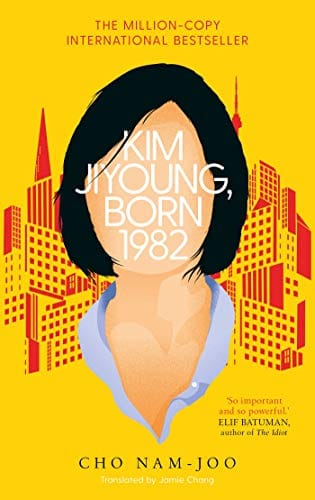Kim Jiyoung, Born 1982: Plot, Themes & Cultural Impact
Explore the plot, feminist themes, and cultural impact of Cho Nam-Joo's bestseller Kim Jiyoung, Born 1982, and learn why the novel still resonates worldwide.

Introduction
When Cho Nam-Joo released Kim Jiyoung, Born 1982 in 2016, she could not have predicted that a slender novel about an ordinary Korean woman would ignite fierce public debate, spark hashtags, and sell millions of copies worldwide. The book’s power lies in its unflinching look at everyday misogyny, following the life of a single protagonist whose story mirrors the experiences of countless women in contemporary South Korea. This article offers an 800-word exploration of the novel’s plot, themes, cultural resonance, and lasting relevance for global readers.
Plot Summary
The novel opens in 2015 with thirty-three-year-old Kim Jiyoung exhibiting alarming behavior: she mimics the voices of other women, living and dead. Disturbed, her husband sends her to a psychiatrist, and the sessions become the narrative frame in which Jiyoung’s life is recounted. Born in 1982 during South Korea’s rapid economic expansion, Jiyoung is the second daughter in a modest Seoul household. From childhood she encounters double standards—receiving fewer treats than her brother, being told to help with housework while boys play, and facing disapproval for climbing trees or getting dirty.
As Jiyoung grows, systemic barriers intensify. In high school she is discouraged from applying to prestigious universities; on public buses she endures harassment from male passengers; at college job fairs she is asked about marriage plans rather than skills. She eventually lands a marketing job, works late nights, and outperforms male colleagues, yet promotions go to men who golf with the boss. After marrying Jung Dae-hyun, Jiyoung quits work to raise their baby because her company lacks proper maternity policies. The loss of professional identity, coupled with relentless social judgment, leads to her psychological break, culminating in the haunting finale where the psychiatrist’s own biases are exposed.
Key Themes
Everyday Sexism
Cho Nam-Joo deliberately builds tension through micro-aggressions rather than dramatic plot twists. By documenting Jiyoung’s life chronologically, the author highlights how small slights accumulate into crushing limitations. Readers witness teachers seating girls at the back of classrooms, bosses handing out coffee orders “because women are tidy,” and relatives praising baby boys for simply existing. The realism is chilling because it is so ordinary—many women recognize these scenes from their own lives, while male readers are invited to notice what they may have overlooked.
Identity and Mental Health
Jiyoung’s dissociative episodes serve as both a narrative device and a metaphor for the erasure of women’s voices. When she channels her deceased friend or exhausted mother, she literally speaks words society refused to hear. The psychiatric framework also raises questions about pathologizing resistance: is Jiyoung ill, or is society sick? By blurring the line between medical disorder and social protest, the novel underscores the psychological toll of gender inequality.
Intergenerational Perspectives
The novel references official statistics—employment rates, wage gaps, birth ratios—to situate personal anecdotes within broader social patterns. It also traces three generations of Korean women: Jiyoung’s grandmother, who survived Japanese occupation; her mother, who sacrificed education to support brothers; and Jiyoung herself, college-educated yet pushed out of the workforce. This lineage reveals incremental progress alongside persistent barriers, illustrating that feminism’s gains are neither linear nor guaranteed.
Cultural Impact in South Korea
In its home country, Kim Jiyoung, Born 1982 became a lightning rod. Young women posted subway selfies reading the novel as a quiet act of protest; conservative commentators dismissed it as “man-hating fiction.” When K-pop star Irene of Red Velvet mentioned reading it, male fans burned her photos and albums. The backlash only amplified sales, turning the book into a barometer of generational and gender divides. Universities added it to curricula, politicians quoted it in parliament, and companies grudgingly reviewed parental-leave policies.
Global Reception
The 2019 English translation by Jamie Chang introduced Jiyoung to a wider audience, and similarities between Korean and Western workplace sexism resonated strongly. The novel topped bestseller lists in the U.K., France, and Japan, and was long-listed for the U.S. National Book Award for Translated Literature. A 2020 film adaptation further boosted visibility, proving that the story’s core struggles—balancing career, family, and autonomy—transcend cultural borders.
Why You Should Read It Today
At just over 150 pages, the book is accessible, yet its impact lingers far longer. Whether you are new to Korean fiction or a seasoned feminist scholar, Jiyoung’s story offers a lens to examine patriarchal systems in any society. The data-rich narrative equips readers with facts to accompany emotions, making it perfect for book clubs, academic courses, or policy discussions.
Frequently Asked Questions
Is the novel autobiographical? While Cho Nam-Joo drew on her own experiences, Jiyoung is a composite character designed to represent many Korean women.
Do I need cultural background to understand it? No. Contextual footnotes and universal themes make the story approachable, though learning about Korean history can deepen appreciation.
Is it a feminist manifesto? The book does not prescribe solutions; instead, it invites reflection by presenting unvarnished realities that speak for themselves.



